Astrotheology of the Ancients
by D.M. Murdock/Acharya S
The following article is excerpted from:
Introduction
The further one regresses in time, the more obvious it becomes that the principal and singular religious worship found around the globe has revolved around nature. This nature worship has included reverence not only for the earth, its creatures and their fecundity, but also for the sun, moon, planets and stars. For many thousands of years, man has looked to the skies and become awestruck by what he has observed. This awe has led to the reverence and worship both of the night and day skies, an adoration called "astrotheology." While fertility worship has constituted an important and prevalent part of the human religion, little has astonished humankind more than the sky, with its enormous, blazing, white day orb in the azure expanse, and with its infinite, twinkling, black night dome. So fascinated by the sky, or heavens, has been man that he has created entire religions, with organized priesthoods, complex rituals and massive edifices, in order to tell its story.
singular religious worship found around the globe has revolved around nature. This nature worship has included reverence not only for the earth, its creatures and their fecundity, but also for the sun, moon, planets and stars. For many thousands of years, man has looked to the skies and become awestruck by what he has observed. This awe has led to the reverence and worship both of the night and day skies, an adoration called "astrotheology." While fertility worship has constituted an important and prevalent part of the human religion, little has astonished humankind more than the sky, with its enormous, blazing, white day orb in the azure expanse, and with its infinite, twinkling, black night dome. So fascinated by the sky, or heavens, has been man that he has created entire religions, with organized priesthoods, complex rituals and massive edifices, in order to tell its story.
 singular religious worship found around the globe has revolved around nature. This nature worship has included reverence not only for the earth, its creatures and their fecundity, but also for the sun, moon, planets and stars. For many thousands of years, man has looked to the skies and become awestruck by what he has observed. This awe has led to the reverence and worship both of the night and day skies, an adoration called "astrotheology." While fertility worship has constituted an important and prevalent part of the human religion, little has astonished humankind more than the sky, with its enormous, blazing, white day orb in the azure expanse, and with its infinite, twinkling, black night dome. So fascinated by the sky, or heavens, has been man that he has created entire religions, with organized priesthoods, complex rituals and massive edifices, in order to tell its story.
singular religious worship found around the globe has revolved around nature. This nature worship has included reverence not only for the earth, its creatures and their fecundity, but also for the sun, moon, planets and stars. For many thousands of years, man has looked to the skies and become awestruck by what he has observed. This awe has led to the reverence and worship both of the night and day skies, an adoration called "astrotheology." While fertility worship has constituted an important and prevalent part of the human religion, little has astonished humankind more than the sky, with its enormous, blazing, white day orb in the azure expanse, and with its infinite, twinkling, black night dome. So fascinated by the sky, or heavens, has been man that he has created entire religions, with organized priesthoods, complex rituals and massive edifices, in order to tell its story.
The story begins, as far back as the current evidence reveals, with the night sky as the primary focus of pre-agricultural, nomadic peoples. The night sky held 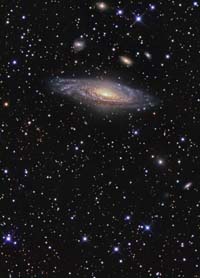 particular importance in the lives of desert nomads, because the fiery sun was a hindrance to them, while the cool night allowed them to travel. In traveling by night, these desert nomads became keenly aware of the night sky's various landmarks, including the stars, planets and moon. The nomads noticed regularity and began to chart the skies, hoping to divine omens, portents and signs. Others who developed this astronomical science included ancient mariners who journeyed thousands of miles through the open seas, such as the Polynesians, whose long, Pacific voyages have been estimated to have begun at least 30,000 years ago. The astronomical science allowed the ancients to predict weather patterns, the turn of seasons and attendant climate changes, as well as comets, asteroids and meteors menacing the earth. Thisarchaeoastronomy was an accurate prognosticator for daily, weekly, monthly and yearly events. Indeed, it was an augur for the changes of entire ages, some of which, as in the chronologies of the Maya, Babylonians and Hindus, extend back hundreds of thousands or millions of years.
particular importance in the lives of desert nomads, because the fiery sun was a hindrance to them, while the cool night allowed them to travel. In traveling by night, these desert nomads became keenly aware of the night sky's various landmarks, including the stars, planets and moon. The nomads noticed regularity and began to chart the skies, hoping to divine omens, portents and signs. Others who developed this astronomical science included ancient mariners who journeyed thousands of miles through the open seas, such as the Polynesians, whose long, Pacific voyages have been estimated to have begun at least 30,000 years ago. The astronomical science allowed the ancients to predict weather patterns, the turn of seasons and attendant climate changes, as well as comets, asteroids and meteors menacing the earth. Thisarchaeoastronomy was an accurate prognosticator for daily, weekly, monthly and yearly events. Indeed, it was an augur for the changes of entire ages, some of which, as in the chronologies of the Maya, Babylonians and Hindus, extend back hundreds of thousands or millions of years.
 particular importance in the lives of desert nomads, because the fiery sun was a hindrance to them, while the cool night allowed them to travel. In traveling by night, these desert nomads became keenly aware of the night sky's various landmarks, including the stars, planets and moon. The nomads noticed regularity and began to chart the skies, hoping to divine omens, portents and signs. Others who developed this astronomical science included ancient mariners who journeyed thousands of miles through the open seas, such as the Polynesians, whose long, Pacific voyages have been estimated to have begun at least 30,000 years ago. The astronomical science allowed the ancients to predict weather patterns, the turn of seasons and attendant climate changes, as well as comets, asteroids and meteors menacing the earth. Thisarchaeoastronomy was an accurate prognosticator for daily, weekly, monthly and yearly events. Indeed, it was an augur for the changes of entire ages, some of which, as in the chronologies of the Maya, Babylonians and Hindus, extend back hundreds of thousands or millions of years.
particular importance in the lives of desert nomads, because the fiery sun was a hindrance to them, while the cool night allowed them to travel. In traveling by night, these desert nomads became keenly aware of the night sky's various landmarks, including the stars, planets and moon. The nomads noticed regularity and began to chart the skies, hoping to divine omens, portents and signs. Others who developed this astronomical science included ancient mariners who journeyed thousands of miles through the open seas, such as the Polynesians, whose long, Pacific voyages have been estimated to have begun at least 30,000 years ago. The astronomical science allowed the ancients to predict weather patterns, the turn of seasons and attendant climate changes, as well as comets, asteroids and meteors menacing the earth. Thisarchaeoastronomy was an accurate prognosticator for daily, weekly, monthly and yearly events. Indeed, it was an augur for the changes of entire ages, some of which, as in the chronologies of the Maya, Babylonians and Hindus, extend back hundreds of thousands or millions of years.
Determining the archaeoastronomy requires the use of astronomy, archaeology, ethnography and other sciences to study legends, texts, artifacts and architectural remains. Such fascinating relics include rock paintings, megalithic structures, calendars and medicine wheels. Cultural remains and ruins globally demonstrate the ancients' interest in and knowledge of "the complex regularity of the motions of the sun, moon, and stars and…unusual occurrences such as the appearance of a nova or comet in the sky."... (26-27)
That ancient peoples, including those thought to be "primitive," possessed this impressive knowledge, which required precise geometrical capacity as well as astronomical expertise, is a fact. That they went to extraordinary lengths to encapsulate and memorialize it is also a fact. Another fact is that the depth of inspiration and passion reflected by these remains is indicative of the ancients’ astrotheological religious tendencies.
The astronomical science of the ancients is the same used today to determine full moons, eclipses, conjunctions and other cosmic events both past and future. It is because of the ancient study that we have this capability today, although our abilities are just beginning to catch up to the archaeoastronomy of such peoples as the Maya and their forebears. This regression and loss of knowledge is due to cataclysm and destruction of human culture. Yet, the basics of this important knowledge were preserved because the ancients used myths as mnemonic devices passed along from generation to generation. This tradition was especially important during the thousands of years when writing was either non-existent or limited. Unfortunately, the key to this knowledge was nevertheless often lost, as the myths became believed as "historical fact."... (28)
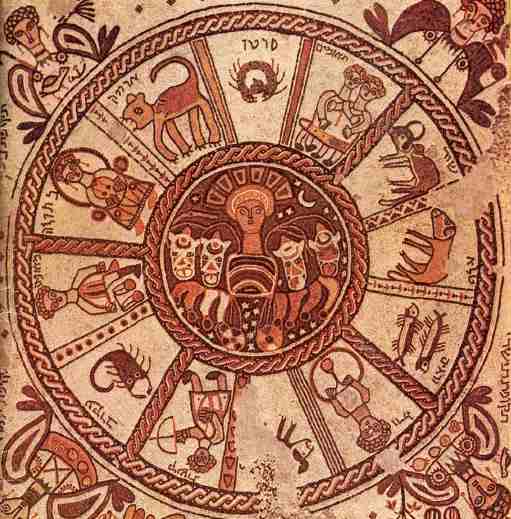 Astronomical or astrotheological knowledge reaches back to the dawn of humanity, appearing widespread and becoming highly developed over a period of millennia. In its entry on "Astrology," the Catholic Encyclopedia describes the development of this archaic science in the ancient world:
Astronomical or astrotheological knowledge reaches back to the dawn of humanity, appearing widespread and becoming highly developed over a period of millennia. In its entry on "Astrology," the Catholic Encyclopedia describes the development of this archaic science in the ancient world:
The history of astrology is an important part of the history of the development of civilization, it goes back to the early days of the human race…. Astrology was…the foster-sister of astronomy, the science of the investigation of the heavens…. According to the belief of the early civilized races of the East, the stars were the source and at the same time the heralds of everything that happened, and the right to study the "godlike science" of astrology was a privilege of the priesthood. This was the case in Mesopotamia and Egypt, the oldest centres of civilization known to us in the East. The most ancient dwellers on the Euphrates, the Akkado-Sumerians, were believers in judicial astrology, which was closely interwoven with their worship of the stars. The same is true of their successors, the Babylonians and Assyrians, who were the chief exponents of astrology in antiquity…. The Assyro-Babylonian priests (Chaldeans) were the professional astrologers of classical antiquity. In its origin Chaldaic astrology also goes back to the worship of stars; this is proved by the religious symbolism of the most ancient cuneiform texts of the zodiac. The oldest astrological document extant is the work called "Namar-Beli" (Illumination of Bel) composed for King Sargon I (end of the third millennium B.C.) and contained in the cuneiform library of King Asurbanipal (668-626 B.C.)…. Even in the time of Chaldean, which should be called Assyrian, astrology, the five planets, together with the sun and moon, were divided according to their character and their position in the zodiac as well as according to their position in the twelve houses. As star of the sun, Saturn was the great planet and ruler of the heavens…. The Egyptians and Hindus were as zealous astrologers as the nations on the Euphrates and Tigris. The dependence of the early Egyptian star (sun) worship (the basis of the worship of Osiris) upon early Chaldaic influences belongs to the still unsettled question of the origin of early Egyptian civilization.
Thus, astrology - a "godlike science"—dates back thousands of years and has been an important part of human civilization. According to mainstream archaeology, the oldest extant text specifically addressing "astrology" dates from the 3rd millennium BCE; yet, the astrological religion or astrotheology is recorded abundantly in Indian, Egyptian and Sumerian sacred literature as well, some of which represents traditions much older than the third millennium. Also, as noted, megalithic ruins push astronomical knowledge back at least 6,000 to 6,500 years ago, while ancient mariners reveal such knowledge dating to 30,000 or more years ago.... (29-30)
In The Roots of Civilization, archaeologist Alexander Marshack discusses "calendar sticks," or ancient bones with markings that Marshack determined represented lunar calendars, dating to at least 25,000 or 35,000 years ago. One of these artifacts is the "Ishango bone" discovered at Lake Edward in Zaire, and possibly dating to 18,000-23,000 BCE. Marshack found other such bones, from the Upper Paleolithic (30,000-10,000 BCE) or Aurignacian culture. Marshack’s contention that they are lunar calendars is not "set in stone," but there is more than good reason to assume it to be accurate. In his book In Search of Ancient Astronomies, astronomer and past-director of Los Angeles's Griffith Observatory, Dr. Edwin Krupp, relates:
"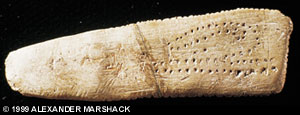 The Blanchard bone, a small piece of bone found in the Dordogne region of France inscribed by some Cro-Magnon individual about twenty thousand years ago, has a complicated pattern of marks. The shapes of the marks vary, and the sequence curves around in a serpentine pattern. In Marshack's view the turns in the sequence represent, on one side, the times of dark, new moon, and on the other, bright full moon. Statistical analyses may not support Marshack' s interpretations, but similar batons and sticks are carved for the same purpose by the Nicobar Islanders in the Bay of Bengal."
The Blanchard bone, a small piece of bone found in the Dordogne region of France inscribed by some Cro-Magnon individual about twenty thousand years ago, has a complicated pattern of marks. The shapes of the marks vary, and the sequence curves around in a serpentine pattern. In Marshack's view the turns in the sequence represent, on one side, the times of dark, new moon, and on the other, bright full moon. Statistical analyses may not support Marshack' s interpretations, but similar batons and sticks are carved for the same purpose by the Nicobar Islanders in the Bay of Bengal."
 The Blanchard bone, a small piece of bone found in the Dordogne region of France inscribed by some Cro-Magnon individual about twenty thousand years ago, has a complicated pattern of marks. The shapes of the marks vary, and the sequence curves around in a serpentine pattern. In Marshack's view the turns in the sequence represent, on one side, the times of dark, new moon, and on the other, bright full moon. Statistical analyses may not support Marshack' s interpretations, but similar batons and sticks are carved for the same purpose by the Nicobar Islanders in the Bay of Bengal."
The Blanchard bone, a small piece of bone found in the Dordogne region of France inscribed by some Cro-Magnon individual about twenty thousand years ago, has a complicated pattern of marks. The shapes of the marks vary, and the sequence curves around in a serpentine pattern. In Marshack's view the turns in the sequence represent, on one side, the times of dark, new moon, and on the other, bright full moon. Statistical analyses may not support Marshack' s interpretations, but similar batons and sticks are carved for the same purpose by the Nicobar Islanders in the Bay of Bengal."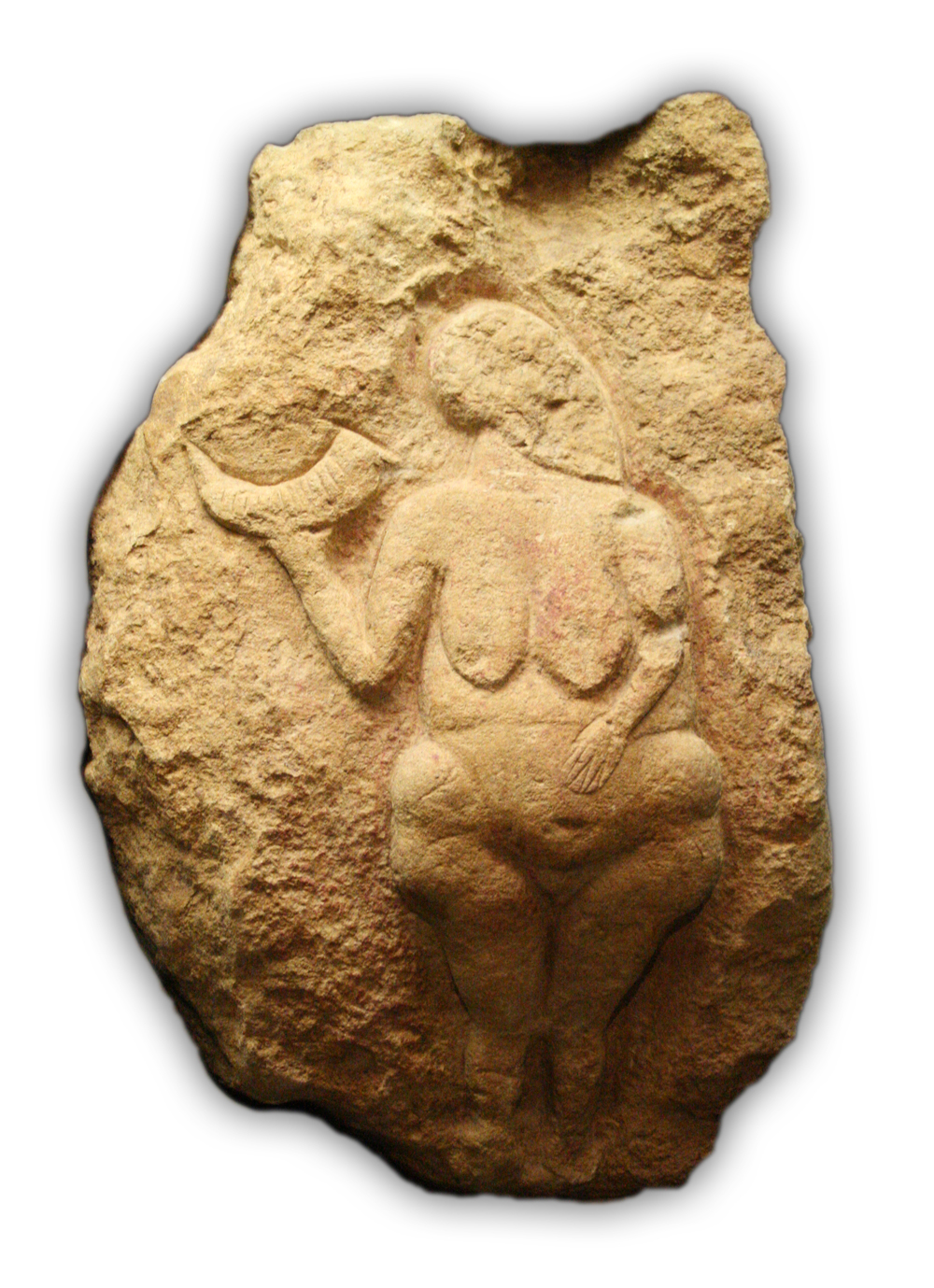 At the very least, these bones demonstrate that the ancients knew how to count, to a certain point. The thesis that these bone markings also reflect the "moons" or menstrual periods of women is likewise sound; hence, it has been suggested, women were the "first mathematicians." One of these women is represented on an 18-inch bas-relief called the "Venus of Laussel," an image dating to the Aurignacian era, some 21,000 years ago. Originally painted in red ochre, suggesting menstrual blood, the Venus holds a curved bison horn with 13 notches, which represent the crescent moon and, apparently, the "Universal Vulva," along with the annual lunar months and women's menses. Significantly, the average menstrual cycle is 29.5 days, the same as the lunar month; hence, the two are intimately connected. In all probability, it was women's observations of their menses that led to timekeeping. Another factor in the development of astronomy was the need for hunters to know the lunar cycle, so they could plan their hunt, based on the waxing or waning of the moon.
At the very least, these bones demonstrate that the ancients knew how to count, to a certain point. The thesis that these bone markings also reflect the "moons" or menstrual periods of women is likewise sound; hence, it has been suggested, women were the "first mathematicians." One of these women is represented on an 18-inch bas-relief called the "Venus of Laussel," an image dating to the Aurignacian era, some 21,000 years ago. Originally painted in red ochre, suggesting menstrual blood, the Venus holds a curved bison horn with 13 notches, which represent the crescent moon and, apparently, the "Universal Vulva," along with the annual lunar months and women's menses. Significantly, the average menstrual cycle is 29.5 days, the same as the lunar month; hence, the two are intimately connected. In all probability, it was women's observations of their menses that led to timekeeping. Another factor in the development of astronomy was the need for hunters to know the lunar cycle, so they could plan their hunt, based on the waxing or waning of the moon.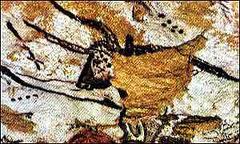 In the famous caves of Lascaux in France have been discovered star maps that date to 16,500 years ago and, according to Dr. Michael Rappenglueck of the University of Munich, record the Pleiades, or "Seven Sisters," as well as the "Summer Triangle," composed of the three stars Vega, Deneb and Altair. A 14,000-year-old star map recording the Northern Constellation was also found in the Cueva di El Castillo in Spain. The art of the ancients in such places as Lascaux and Alta Mira, Spain, dating to the Paleolithic (17,000+ Before Present), or Adduara, Sicily (15,000-10,000 BCE), shows a high degree of intelligence, comparable to that of humans today. In discussing the ancients it should be kept in mind that, despite the impression given by strict, linear-evolutionary thinking, humans at least 100,000 years ago (a number that keeps being pushed back) possessed the identical cranial capacity as they do today. Instead of a bunch of grunting ape-men, there were likely individuals among them with IQ's similar to modern geniuses. It is probable that, as today, there were human beings living in varying states of "civilization," with some prehistoric humans wearing rough skins and living in caves, while other early humans created more advanced culture.... (30-31)
In the famous caves of Lascaux in France have been discovered star maps that date to 16,500 years ago and, according to Dr. Michael Rappenglueck of the University of Munich, record the Pleiades, or "Seven Sisters," as well as the "Summer Triangle," composed of the three stars Vega, Deneb and Altair. A 14,000-year-old star map recording the Northern Constellation was also found in the Cueva di El Castillo in Spain. The art of the ancients in such places as Lascaux and Alta Mira, Spain, dating to the Paleolithic (17,000+ Before Present), or Adduara, Sicily (15,000-10,000 BCE), shows a high degree of intelligence, comparable to that of humans today. In discussing the ancients it should be kept in mind that, despite the impression given by strict, linear-evolutionary thinking, humans at least 100,000 years ago (a number that keeps being pushed back) possessed the identical cranial capacity as they do today. Instead of a bunch of grunting ape-men, there were likely individuals among them with IQ's similar to modern geniuses. It is probable that, as today, there were human beings living in varying states of "civilization," with some prehistoric humans wearing rough skins and living in caves, while other early humans created more advanced culture.... (30-31)The Archaic Winter Solstice
In Prehistoric Lunar Astronomy, S.B. Roy postulates that various artifacts found deep in caves, such as the painting known as "Sorcerer with the Antelope's Head" from Les Trois Freres caves in the French Pyrenees, are representative of...secret deposits [relating to the mysteries]. These caves were occupied during the Magdalenian period, 10,000-16,000 years ago, although [mythologist] Robert Graves dates the paintings to "at least 20,000 B.C." Regarding possible rituals performed in these caves, some of which are very inaccessible and would therefore likely represent the place of a secret, esoteric initiation, Roy remarks that they would "necessarily be performed at a particular auspicious moment," upon which their potency would depend. This auspicious moment would be dependent on the solar and lunar phases, as well as the seasons: "The ancient wise men looked up at the heavens to ascertain the proper timing, because the Moon was the most ancient timekeeper, says Yaska [1400 BCE]..." Such "auspicious moments" can be dated using these astronomical keys.
 Roy posits that the antelope-headed "sorcerer" was "a figure marking the onset of a season." The reasons for this assertion include that the "remote traditions" in the Rig Veda and in Vedic astronomy relate that the Stag's head represents the star L-Orionis and the winter solstice at the new moon, as well as the summer solstice at the full moon. Roy concludes that the sorcerer figure "marked the winter solstice," which was "a great day in the Ice Age of Europe." Based on the astronomy, the figure dates to 10,600 BCE. Furthermore, this stag-headed sorcerer figure is similar to solar images on seals from the Indus Valley city of Mohenjo-Daro dating to the third millennium BCE.
Roy posits that the antelope-headed "sorcerer" was "a figure marking the onset of a season." The reasons for this assertion include that the "remote traditions" in the Rig Veda and in Vedic astronomy relate that the Stag's head represents the star L-Orionis and the winter solstice at the new moon, as well as the summer solstice at the full moon. Roy concludes that the sorcerer figure "marked the winter solstice," which was "a great day in the Ice Age of Europe." Based on the astronomy, the figure dates to 10,600 BCE. Furthermore, this stag-headed sorcerer figure is similar to solar images on seals from the Indus Valley city of Mohenjo-Daro dating to the third millennium BCE.
Dating the migration of the European Magdalenian cave-dwellers to the recession of the "fourth glacial Wisconsin-Valders final sub-phase," 10,000 years ago, Roy further states:
In Northern Europe and Asia, in latitudes of 60º and higher, where Slavonic languages now prevail, the winter was then long and dark. It was very cold. Everyone looked to the day of the winter solstice when the sun would turn North. The astronomers would know the date even though the sun itself was not visible. This was the great day, for the spring would now come.
Thus, the winter solstice was an important factor in human culture, particularly that of the cold, northern latitudes, at least 12,000 years ago. The winter solstice celebration that developed throughout much of the inhabited world has been handed down as "Christmas," i.e., December 25th, the birthday of the sun of God. "Christmas" is thus an extremely ancient celebration, predating the Christian era by many millennia.... (33-34)
 Who Were The Ancient Gods?
Who Were The Ancient Gods?
The subject of what or who were the ancient gods has been the focus of much serious debate and wild speculation over the centuries. The reality is that the ancient gods were mainly astrotheological and/or based on natural, earthly forces. This fact is attested by numerous authorities over the millennia, including ancient writers reflecting upon their own religions and those of other known cultures. ...[T]he ancient authorities who knew that the gods were astronomical, i.e., the sun, moon, stars and planets, and elemental, i.e., water, fire, wind, etc., or natural, i.e., rivers and springs, included Epicharmos (c. 540-450 BCE), Prodikos (5th cent. BCE); Caesar (100-40 BCE) and Herodotus (484?-425 BCE).... (35-36)
The Precession of the Equinoxes
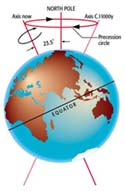 Another important factor in ancient astrotheology is the precession of the equinoxes, a phenomenon caused by the earth's off-axis tilt, whereby the sun at the vernal equinox (spring) is back-dropped by a different constellation every 2150 or so years, a period called an "age." One cycle of the precession, through the 12 signs of the zodiacal ages is called a "Great Year," and is approximately 26,000 years long. According to orthodox history, the precession was only "discovered" in the second century bce by the Greek astronomer Hipparchus; however, it is clear from ancient texts, traditions, artifacts and monuments that more ancient peoples knew about it and attempted to compensate for it from age to age. In Hamlet's Mill, Santillana and Dechend demonstrate knowledge of the precession at much earlier times, stating: "There is good reason to assume that he [Hipparchus] actually rediscovered this, that it had been known some thousand years previously, and that on it the Archaic Age based its long-range computation of time."... (39-40)
Another important factor in ancient astrotheology is the precession of the equinoxes, a phenomenon caused by the earth's off-axis tilt, whereby the sun at the vernal equinox (spring) is back-dropped by a different constellation every 2150 or so years, a period called an "age." One cycle of the precession, through the 12 signs of the zodiacal ages is called a "Great Year," and is approximately 26,000 years long. According to orthodox history, the precession was only "discovered" in the second century bce by the Greek astronomer Hipparchus; however, it is clear from ancient texts, traditions, artifacts and monuments that more ancient peoples knew about it and attempted to compensate for it from age to age. In Hamlet's Mill, Santillana and Dechend demonstrate knowledge of the precession at much earlier times, stating: "There is good reason to assume that he [Hipparchus] actually rediscovered this, that it had been known some thousand years previously, and that on it the Archaic Age based its long-range computation of time."... (39-40)
 The Astrotheological Priesthood
The Astrotheological Priesthood
The best-known astronomical priestly caste was that of the Assyro-Babylonian culture called the Chaldeans, who, with the demise of the Assyro-Babylonian empire, were eventually dispersed into other parts of the world, including Greece. After this development, the Chaldean occult science became less hidden and more known to the masses. From ancient authorities it is evident that the term "Chaldean" ceased to be descriptive of an ethnicity but came to be considered an appellation for the astrological priestly order, from which the Hebrew priesthood, among others, was in large part derived, although the biblical imitators never reached the sublimity of the original. Reflecting their widely held esteem, in On Mating with the Preliminary Studies (X, 50), the Jewish philosopher Philo Judaeus of Alexandria (c. 20 BCE-c. 50 CE) described the Chaldeans as understanding to an "eminent degree" what he called "astronomy" and further termed "the queen of all the sciences."... (42-43)
Christian Attestation of Astrotheology
We have seen how various ancient, pre-Christian writers explained that their gods were astrotheological and that astrology was a predominant ideology or "science" in the Pagan world. Like the Pagans, the early Church fathers discussed the pervasive astrotheology, as they could hardly avoid it, since it was their competition. Naturally, when they did address it their comments were often condescending or disparaging. For example, in Against the Heathen, theologian St. Athanasius (c. 293-373) attempted to raise the Christian god above all the rest, establishing the ancient worship as astrotheological and relating that mankind "gave the honour due to God first to the heaven and the sun and moon and the stars, thinking them to be not only gods, but also the causes of the other gods lower than themselves…" (48)
Astrotheological Origin of Christianity
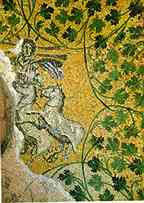 The Christian assault on astrology was furious and motivated by a desire for dominance and the replacement of the Pagan astrotheology with that of Christianity, with an eye to covering up the latter's own astrotheological roots. The Christian fathers eventually were responsible for vicious persecution of "astrologers," i.e., those Chaldeans and others who were priests of Pagan faiths. Arabic and Jewish universities and scholars kept astrology alive throughout the Middle Ages, despite continued persecution by Christians. As time went on, this "false doctrine," which never disappeared from Europe but was condemned on the one hand and embraced on the other by Church authorities, began to resurface more overtly. Indeed, numerous emperors and popes "became votaries of astrology," including "Charles IV and V, and Popes Sixtus IV, Julius II, Leo X, and Paul III," as related by the Catholic Encyclopedia. "Among the zealous patrons of the art were the Medici," CE continues, with Catharine de Medici popularizing astrology among the French and making Nostradamus her "court astrologer." Popes Leo X and Clement VII retained the same court astrologer, Gauricus, who "published a large number of astrological treatises." Moreover, during the Renaissance , CE further recounts, "religion…was subordinated to the dictation of astrology," with the rise of each religion given astrological foundation... (52-53)
The Christian assault on astrology was furious and motivated by a desire for dominance and the replacement of the Pagan astrotheology with that of Christianity, with an eye to covering up the latter's own astrotheological roots. The Christian fathers eventually were responsible for vicious persecution of "astrologers," i.e., those Chaldeans and others who were priests of Pagan faiths. Arabic and Jewish universities and scholars kept astrology alive throughout the Middle Ages, despite continued persecution by Christians. As time went on, this "false doctrine," which never disappeared from Europe but was condemned on the one hand and embraced on the other by Church authorities, began to resurface more overtly. Indeed, numerous emperors and popes "became votaries of astrology," including "Charles IV and V, and Popes Sixtus IV, Julius II, Leo X, and Paul III," as related by the Catholic Encyclopedia. "Among the zealous patrons of the art were the Medici," CE continues, with Catharine de Medici popularizing astrology among the French and making Nostradamus her "court astrologer." Popes Leo X and Clement VII retained the same court astrologer, Gauricus, who "published a large number of astrological treatises." Moreover, during the Renaissance , CE further recounts, "religion…was subordinated to the dictation of astrology," with the rise of each religion given astrological foundation... (52-53)Conclusion
As is evident, the study and reverence of the heavens goes back many millennia, and has constituted in large part the original religious concepts developed by humanity. As is also clear, the ancients were well aware that they were worshipping the sun, moon, stars and "all the host of heaven." Entire cultures were based upon astrotheology, and numerous magnificent edifices were constructed for its glorification. Indeed, the proscription by biblical writers shows how important and widespread was this worship of the cosmic bodies and natural phenomena. The Church fathers and other Christian writers also acknowledged this astrotheology and its antiquity, but denigrated it as much as possible. Why? What would a detailed investigation reveal about their own ideology? As demonstrated in The Christ Conspiracy and here, the knowledge about astrotheology would reveal the Christians' own religion to be Pagan in virtually every significant aspect, constituting a remake of the ancient religion. Yet, this astrotheology devised by our remote ancestors over a period of millennia was symbolically and allegorically a treasure-trove. Hence, the restoration of this knowledge is not to be despaired but rejoiced. (56-57)

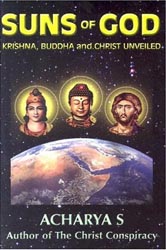
Δεν υπάρχουν σχόλια:
Δημοσίευση σχολίου